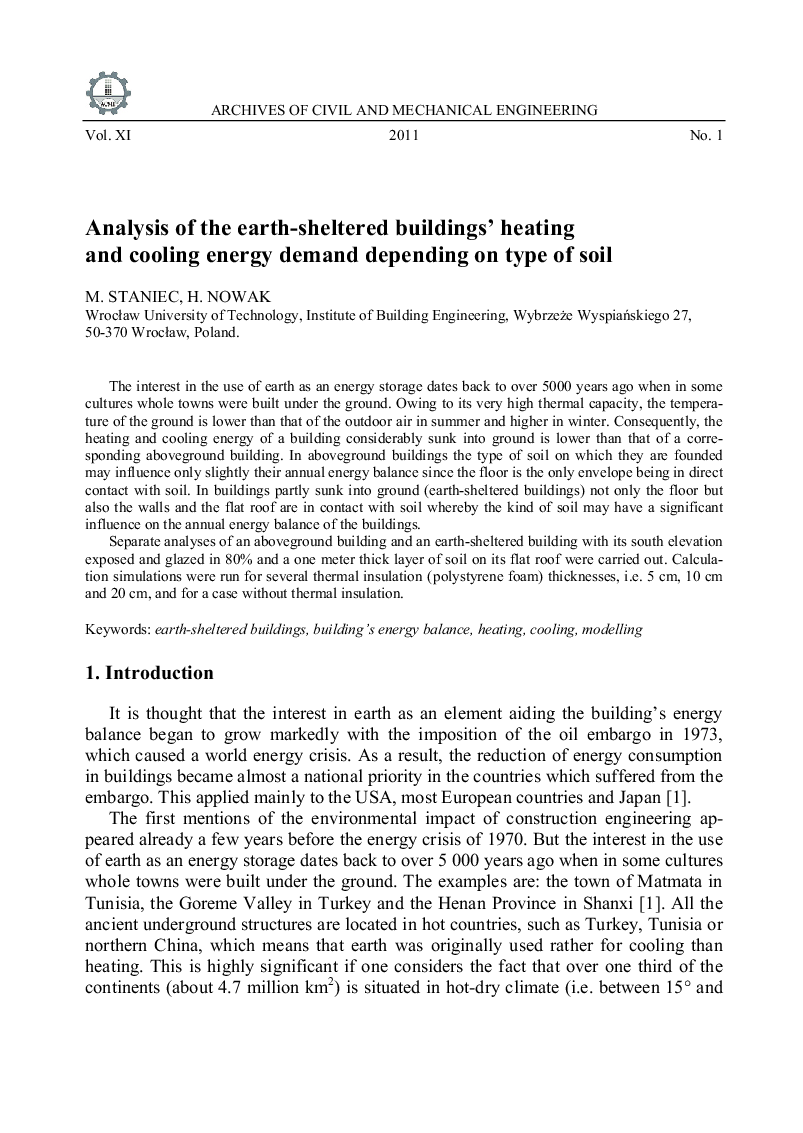| Article ID | Journal | Published Year | Pages | File Type |
|---|---|---|---|---|
| 245809 | Archives of Civil and Mechanical Engineering | 2011 | 15 Pages |
The interest in the use of earth as an energy storage dates back to over 5000 years ago when in some cultures whole towns were built under the ground. Owing to its very high thermal capacity, the temperature of the ground is lower than that of the outdoor air in summer and higher in winter. Consequently, the heating and cooling energy of a building considerably sunk into ground is lower than that of a corresponding aboveground building. In aboveground buildings the type of soil on which they are founded may influence only slightly their annual energy balance since the floor is the only envelope being in direct contact with soil. In buildings partly sunk into ground (earth-sheltered buildings) not only the floor but also the walls and the flat roof are in contact with soil whereby the kind of soil may have a significant influence on the annual energy balance of the buildings.Separate analyses of an aboveground building and an earth-sheltered building with its south elevation exposed and glazed in 80% and a one meter thick layer of soil on its flat roof were carried out. Calculation simulations were run for several thermal insulation (polystyrene foam) thicknesses, i.e. 5 cm, 10 cm and 20 cm, and for a case without thermal insulation.
